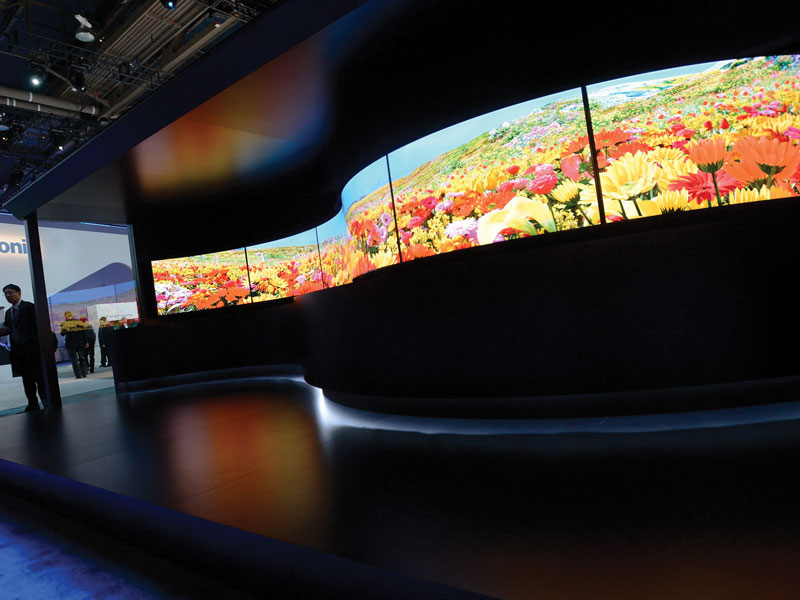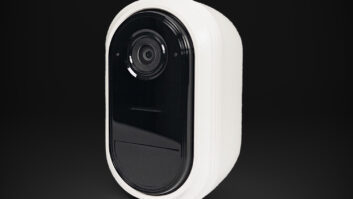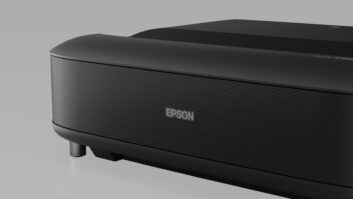
Ultra HD TV with high dynamic range (HDR) is going to change the way consumers see TV, figuratively and literally. All consumers have to do is see the HDR difference to be convinced to buy a UHD TV.
And UHD Blu-ray will give new life to “hard” media.
At least these are the views of the TV and technology execs who spoke about the category’s future at the recent IFA technology show in Berlin.
“The Consumer Electronics Association (which hosted the executives) want[s] everyone to know how bullish we are on 4K,” stated Peter Fannon, Panasonic’s VP of corporate and governmental affairs. “We want to speed up the TV replacement cycle, especially with the addition of HDR.”
Fannon is referring to the release last month of CEA’s “HDR-Compatible Displays” specifications UHD makers must adhere to to give their sets a baseline compatibility and interoperability with any/all the various HDR formats and UHD Blurays. Once the baseline standards are adhered to, UHD TV makers will be free to add any of their own HDR, perhaps approaching the heretofore unapproachable Rec. 2020 specifications, or wide color gamut (WCG) enhancements to create competitive differences.
This speed at which this HDR designation was delivered was somewhat of a surprise.
“The UHD Alliance has been active in developing further details for standards in this arena for this technology to show up sooner that it might have,” Fannon explained.
CEA and UHD makers were kind of forced to come up with HDR standards sooner rather than later. LG, Panasonic and Samsung presented plans on unveiling their first UHD Blu-ray decks either by Christmas or at CES 2016.
Even without HDR, these three UHD makers believe UHD sales will be far healthier than predicted, perhaps as many as 7 million units, four times last year’s sales. Globally, GfK predicts that 28.4 million UHD TVs will be sold worldwide this year, a 178 percent year-over-year jump, fueled mostly by eager Chinese buyers.
Older UHDs and even 2K sets won’t get left behind in the coming HDR evolution. Samsung’s TV marketing VP and chair of the Blue-ray Disc Association U.S. Promotions Group Dan Schinasi said his company will deliver HDR via firmware updates to current non-HDR UHD models. And thanks to tone mapping, which matches the HDR capabilities to the display to which it is attached, a plain 2K HDTV playing a UHD Blu-ray with HDR “looks demonstrably better.”
UHD Blu-ray with HDR “will help lift the industry,” Fannon insisted, “not just the TV industry but connected devices.”
UHD HDR Broadcast?
There is streaming 4K content with HDR and, soon, UHD Blu-ray with HDR. But everyone agreed that UHD would get the biggest boost via broadcast.
Initial 4K broadcasting experiments are already taking place in Europe and the U.K., but they and U.S. broadcasters are waiting for two things: “common monolithic” broadcast standards and a critical mass of UHD TVs in the market – a similar chicken-egg conundrum the first HDTV makers faced nearly two decades ago.
“The Ultra HD Forum is working on an end-to-end ecosystem, working with operators and broadcasters,” reported Nandhu Nandhakumar, senior VP of advanced technology at LG.
“Broadcasters want [UHD with HDR] deployed in TVs and with [a critical mass of] content,” added Ron Martin, VP Panasonic Hollywood Labs. “Once the proof is in that pudding, broadcasters will adapt already agreed upon standards. And there are amazing collaborations going on in the varying standards bodies.”
Fannon noted that industry recommendations for a broadcast 4K/HDR standard will be ready for FCC consideration in mid- to late 2016. But everyone agreed that having some sort of 4K/HDR standard ready for the 2016 Olympics for showcasing would be optimal.
CEA won’t be waiting until next summer to show off either broadcast or UHD Bluray with UHD/HDR. Fannon teased that we’d hear more about broadcast 4K as well as some “unique” CEA/Hollywood UHD/HDR demos at the upcoming CES, along with a host of new UHD Blu-ray decks from a variety of manufacturers.
The last remaining issue in this new UHD/HDR utopia is explaining and demonstrating to consumers the improvement HDR brings to 4K TV. “CEA has a retailer council who are laser-focused on how to explain [HDR] in the simplest way possible,” Fannon said. “The inducement [to buy] is they’ll see a picture like they’ve never seen before.”
What Defines An HDR TV?
The Consumer Electronics Association’s definition for high dynamic range compatible video displays is designed to assist retailers and consumers in identifying display products that incorporate the interface and processing technology needed to display the new content properly.
HDR greatly improves the contrast ratio of video content on HDR-enabled TVs, delivering much brighter highlights and much deeper blacks without washing out details in the bright and dark. It also delivers a far wider color gamut than conventional displays.
CEA’s Video Division Board approved the following definition: A TV, monitor or project may be referred to as a HDR Compatible Display if it meets the following minimum attributes:
• includes at least one interface that supports HDR signaling as defined in CEA-861-F, as extended by CEA-861.3;
• receives and processes static HDR metadata compliant with CEA-861.3 for uncompressed video;
• receives and processes HDR10 Media Profile from IP, HDMI or other video delivery sources; additionally, other media profiles may be supported;
• applies an appropriate Electro-Optical Transfer Function, before rendering the image.
These characteristics for HDR interoperability were developed in collaboration between CEA and its display manufacturer members with leading content providers and distributors. CEA has also implemented a variety of promotional efforts to help educate consumers and retailers about the new display technology.













